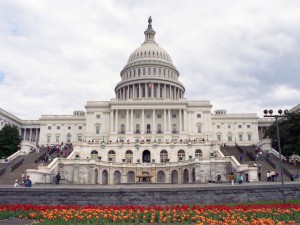 The US Federal Reserve bank has launched a third round of quantitative easing, dubbed QE3. The hope is that the resulting growth in money supply will stimulate spending and thereby increase growth and employment.
The US Federal Reserve bank has launched a third round of quantitative easing, dubbed QE3. The hope is that the resulting growth in money supply will stimulate spending and thereby increase growth and employment.
Ben Bernanke, the Fed Chairman, had already said that the stagnation of the labour market is of grave concern because of “the enormous suffering and waste of human talent it entails, but also because persistently high levels of unemployment will wreak structural damage on our economy that could last for many years”. Not, surprisingly, the markets were expecting strong action – and that is what they got.

Under QE3, the Fed will buy mortgage-backed securities of $40bn per month. And this will go on for as long as it takes for the employment market to show significant improvement. It is this open-ended commitment which makes QE3 different from QE1 and QE2. Under these earlier rounds of quantitative easing, the Fed purchased a fixed amount of assets – $2.3tn of bonds.
QE3 also comes on top of a policy in operation since September 2011 of buying long-term government bonds in the market and selling shorter-dated ones. This ‘funding’ operation is known as ‘Operation Twist’.
The markets responded favourably to the announcement of QE3, especially to the fact that its size and duration would depend on the state of the real economy. Nevertheless, there are real questions about its likely effectiveness. The most important is whether the increase in narrow money will translate into an increase in borrowing and spending and hence an increase in broad money; or whether the rise in narrow money will be offset by a fall in the velocity of circulation as banks seek to increase their liquidity ratios and to recapitalise.
The following articles look at the details of QE3 and whether it is likely to achieve its desired result. Will the Fed be forced to raise asset purchases above $40bn per month or to introduce other measures?
Articles
Federal Reserve to buy more debt to boost US economy BBC News (14/9/12)
Bernanke takes plunge with QE3 Financial Times, Robin Harding (14/9/12)
US monetary policy at an important turning point Financial Times, Gavyn Davies (2/9/12)
Cliffhanger The Economist (22/9/12)
Your flexible Fed BBC News, Stephanie Flanders (13/9/12)
Back Ben Bernanke’s QE3 with a clothes peg on your nose The Telegraph, Ambrose Evans-Pritchard (23/9/12)
QE3 Stimulus from Federal Reserve Drives Mortgage Rates Down to Record Lows TellMeNews, Sharon Wagner (24/9/12)
Helicopter Ben Bernanke: The Problem With QE1, QE2, QE3 and QE Infinity TellMeNews, Martin Hutchinson (18/9/12)
QE: More bang than buck Business Spectator, Stephen Grenville (18/9/12)
QE3: What it Really Means PBS NewsHour, Paul Solman (20/9/12)
US Data
US Money Stock Measures Federal Reserve Statistical Release
Data Releases Board of Governors of the Federal Reserve System
Civilian Unemployment Rate (UNRATE) FRED Economic Data
Questions
- What distinguishes the Fed’s QE3 from its QE1 and 2?
- What will determine the likely success of QE3 in stimulating the real economy?
- Why has there been a huge surge in liquidity preference in the USA? What would have been the impact of this without QE1 and QE2?
- Explain what is meant by ‘portfolio balance effects’ and how significant are these in determining the success of quantitative easing?
- Does QE3 suggest that the Fed is pursuing a type of Taylor Rule?
- Why might QE3 be a “pro-cyclical” blunder?
- To what extent would monetarists approve of the Fed’s policies on QE?
- How is QE3 likely to affect the dollar exchange rate and what implications will this have for countries trading with the USA?
As the prospects for the global recovery become more and more gloomy, so the need for a boost to aggregate demand becomes more pressing. But the scope for expansionary fiscal policy is very limited, given governments’ commitments around the world to deficit reduction.
This leaves monetary policy. In the USA, the Federal Reserve has announced a policy known as ‘Operation Twist’. This is a way of altering the funding of national debt, rather than directly altering the monetary base. It involves buying long-term government bonds in the market and selling shorter-dated ones (of less than three years) of exactly the same amount ($400bn). The idea is to drive up the price of long-term bonds and hence drive down their yield and thereby drive down long-term interest rates. The hope is to stimulate investment and longer-term borrowing generally.
Meanwhile in Britain it looks as if the Bank of England is about to turn to another round of quantitative easing (QE2). The first round saw £200bn of asset purchases by the Bank between March 2009 and February 2010. Up to now, it has resisted calls to extend the programme. However, it is now facing increased pressure to change its mind, not only from commentators, but from members of the government too.
But will expansionary monetary policy work, given the gloom engulfing the world economy? Is there a problem of a liquidity trap, whereby extra money will not actually create extra borrowing and spending? Many firms, after all, are not short of cash; they are simply unwilling to invest in a climate of falling sales and falling confidence.
Articles on Operation Twist
Fed takes new tack to avoid U.S. economic slump Reuters, Mark Felsenthal and Pedro da Costa (21/9/11)
 How the Fed Can Act When Washington Cannot Associated Press on YouTube (20/9/11)
How the Fed Can Act When Washington Cannot Associated Press on YouTube (20/9/11)
Analysis: Fed’s twist moves hurts company pension plans Reuters, Aaron Pressman (21/9/11)
What is Operation Twist? Guardian, Phillip Inman (21/9/11)
Operation Twist in the Wind Asia Times, Peter Morici (23/9/11)
Operation Twist won’t kickstart the US economy Guardian, Larry Elliott (21/9/11)
Stock markets tumble after Operation Twist … and doubt Guardian, Julia Kollewe (22/9/11)
‘Twist’ is a sign of the Fed’s resolve Financial Times, Robin Harding (22/9/11)
All twist, no shout, from the Fed Financial Times blogs, Gavyn Davies (21/9/11)
Twisting in the wind? BBC News, Stephanie Flanders (21/9/11)
Restraint or stimulus? Markets and governments swap roles BBC News, Stephanie Flanders (7/9/11)
FOMC Statement: Much Ado, Little Impact Seeking Alpha, Cullen Roche (21/9/11)
Why the Fed’s Operation Twist Will Hurt Banks International Business Times, Hao Li (21/9/11)
The Federal Reserve: Take that, Congress The Economist (21/9/11)
Articles on QE2
Bank of England’s MPC indicates QE2 is a case of if not when The Telegraph, Angela Monaghan (21/9/11)
Bank of England quantitative easing ‘boosted GDP’ BBC News (19/9/11)
Bank of England minutes indicate more quantitative easing on the cards Guardian, Julia Kollewe (21/9/11)
Fed and Bank of England publications
Press Release [on Operation Twist] Board of Governors of the Federal Reserve System (21/9/11) (Also follow links at the bottom of the Press Release for more details.)
Minutes of the Monetary Policy Committee Meeting, 7 and 8 September 2011 Bank of England (21/9/11) (See particularly paragraphs 29 to 32.)
Questions
- Explain what is meant by Operation Twist.
- What determines the extent to which it will stimulate the US economy?
- Why would quantitative easing increase the monetary base while Operation Twist would not? Would they both increase broad money? Explain.
- What is meant by the liquidity trap? Are central banks in such a trap at present?
- To what extent would a further round of quantitative easing in the UK drive up inflation?
- Why are monetary and fiscal policy as much about affecting expectations as ‘pulling the right levers’?
 The US Federal Reserve bank has launched a third round of quantitative easing, dubbed QE3. The hope is that the resulting growth in money supply will stimulate spending and thereby increase growth and employment.
The US Federal Reserve bank has launched a third round of quantitative easing, dubbed QE3. The hope is that the resulting growth in money supply will stimulate spending and thereby increase growth and employment.
